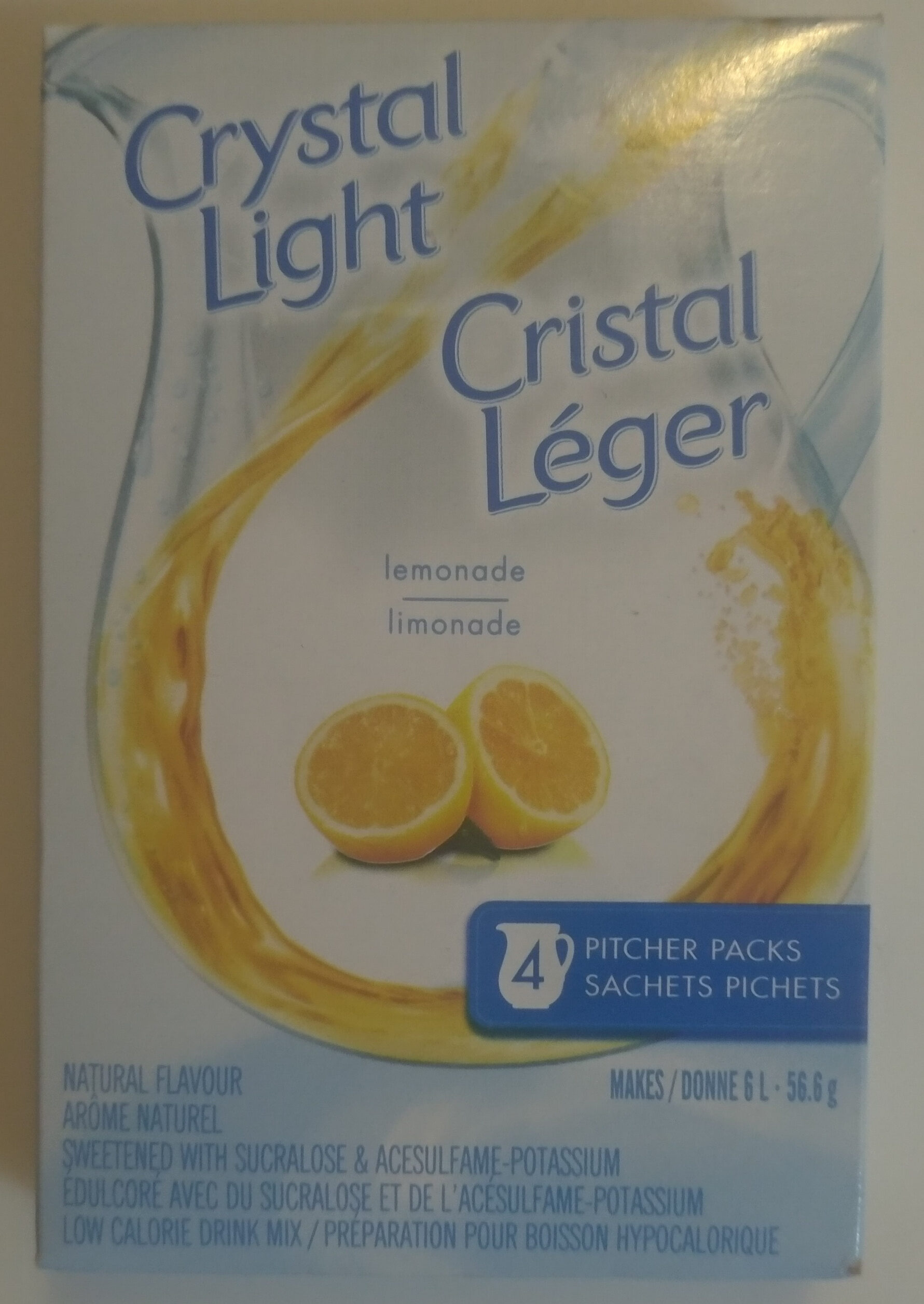Lemonade Crystal Light - 56.6 g
This product page is not complete. You can help to complete it by editing it and adding more data from the photos we have, or by taking more photos using the app for Android or iPhone/iPad. Thank you!
×
Barcode: 0066188056635 (EAN / EAN-13) 066188056635 (UPC / UPC-A)
Quantity: 56.6 g
Brands: Crystal Light
Categories: Beverages, Carbonated drinks, Dried products, Dried products to be rehydrated, Sodas, Dehydrated beverages, Lemonade
Labels, certifications, awards: Kosher, COR Kosher
Link to the product page on the official site of the producer: https://www.kraftcanada.ca/brands/crysta...
Stores: Real Canadian Superstore
Countries where sold: Canada
Matching with your preferences
Health
Food processing
Additives
Ingredients analysis
Environment
Packaging
Transportation
Report a problem
Data sources
Product added on by kiliweb
Last edit of product page on by binzyboi.
Product page also edited by yuka.sY2b0xO6T85zoF3NwEKvlhZ3ddfigxbiOzDQuGGU5uWECsLnb9Niw42kP6s.








